We neighborhood kids used to call it the "Chalk Mine." To us, the abandoned quarry looked like something out of the Old West. We thought for sure it had been there since cowboy days; maybe even a hundred years! There were a bunch of other tall tales about the place, but it would be another half century before I finally uncovered its factual history.
Featherstone Quarry was the entrepreneurial brainchild of one David Forbes Meiklejohn (1876-1937):1 a Stanford-educated mining engineer2 who, around 1920, stumbled somewhat serendipitously upon a large deposit of almost pure diatomaceous earth on Chaffee lands in the hills southeast of Covina, and subsequently invested a quarter-million dollars to exploit what he perceived as its "vast wealth."
Extraction of the resource began in late 1920-early 1921, when roads to the site were graded and a processing plant constructed.3 The diatomite was used primarily in the manufacture of insulation,3 tile, pipes and conduits.4 Exactly why and when quarrying ended, however, is uncertain. A geology field report based upon data compiled in 1932 stated that operation of the mine "ceased several years ago,"4 so it may be that Featherstone Quarry did not survive as a going concern past 1930.
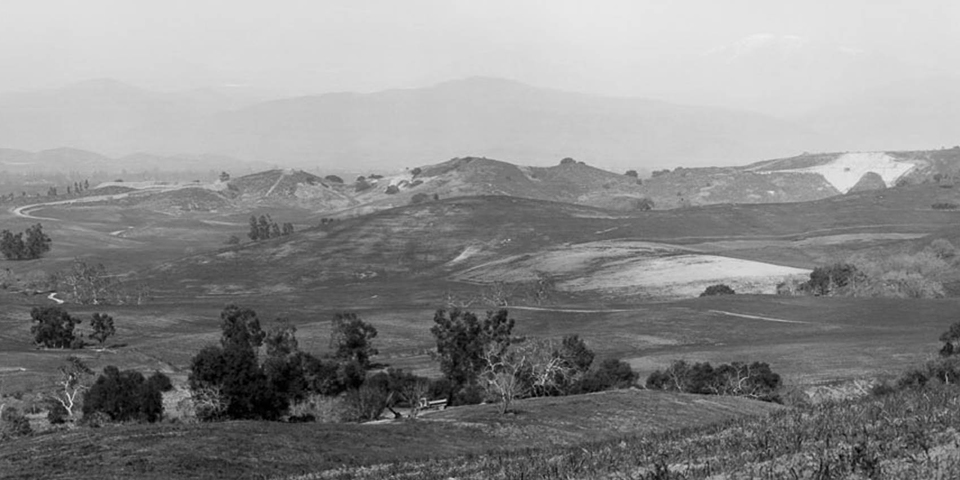
Featherstone Quarry, Covina Hills, 1929. The complex extended from today's Rancho La Floresta Drive at left to the main diatomite mine at right. I-10 now passes from left to right through the low white hill at center. 'Dick' Whittington Studio, photographer. Courtesy of The Huntington Library, San Marino, CA. Link to full-res image.
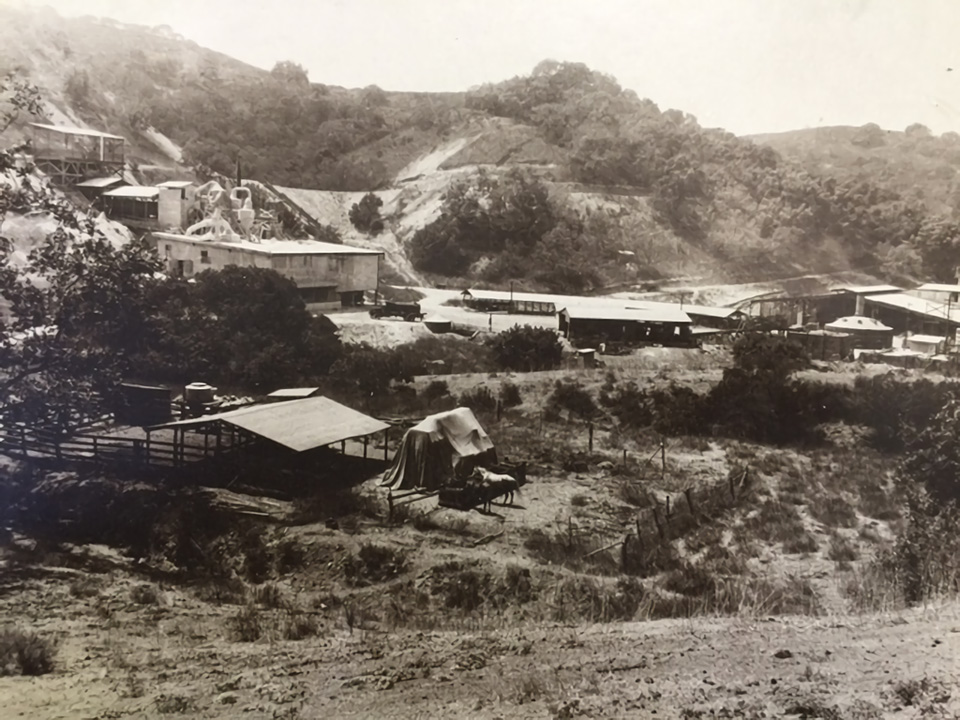
The processing plant over the hill on the Charter Oak side, mid-1920s. In this photo, we are standing on a spot a few yards down the hill from the end of today's Woodhurst Drive, facing southwest toward the intersection of Rancho Los Nogales Drive and Puente Street. Photo courtesy Covina Valley Historical Society.
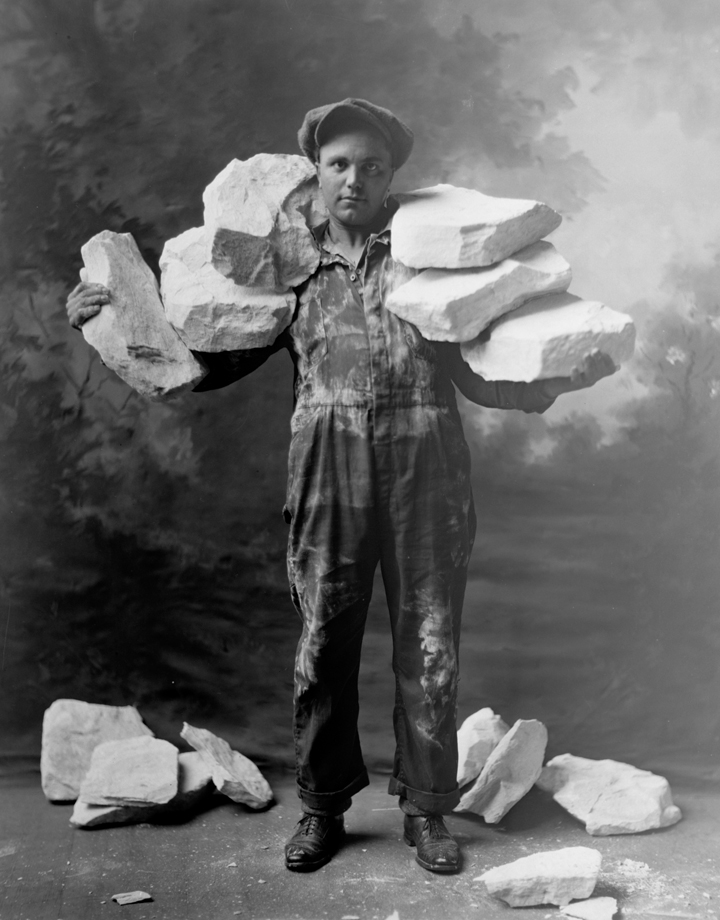
A worker showing why the mine was named Featherstone! The diatomite formed in the Miocene epoch approximately 7 million years ago.4
Image courtesy Covina Valley Historical Society c/o Powell Camera Shop.
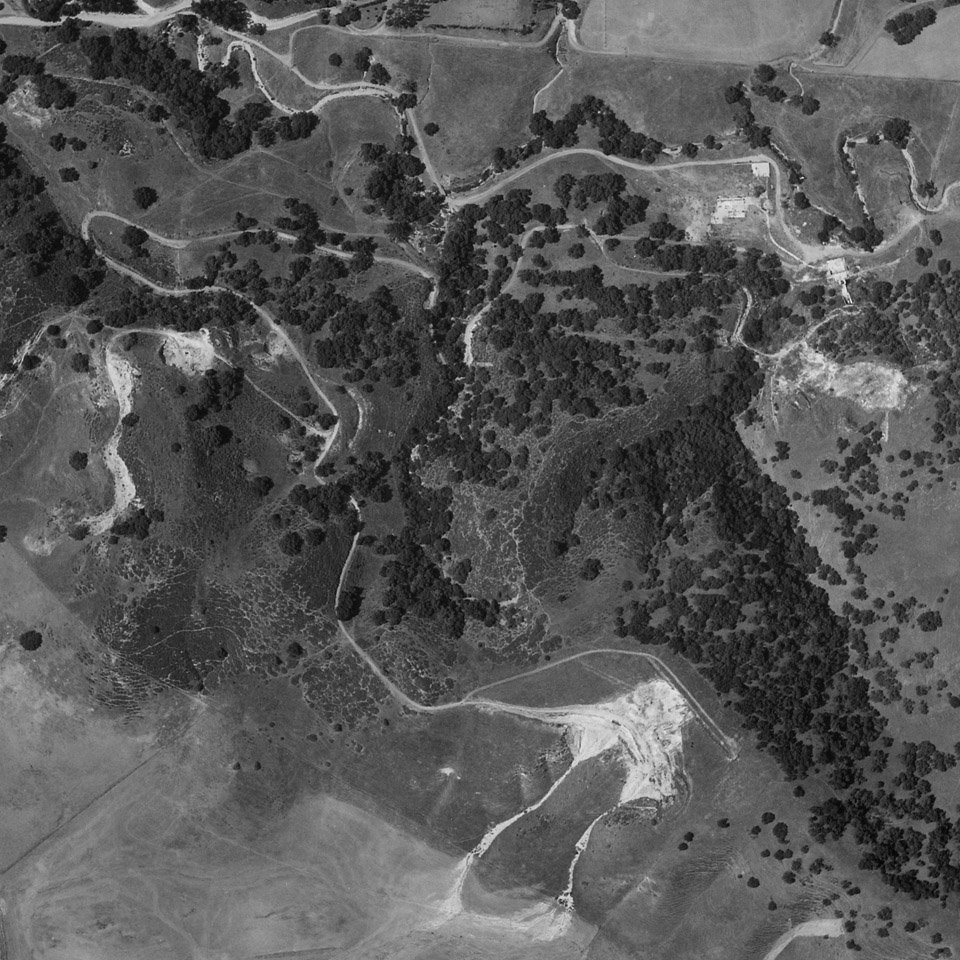
The main quarry (bottom) and its associated roads in 1934. The road at top approximately follows the alignment of today's Puente St.; the road over the hill from the quarry site, Jalapa Drive. Fair use courtesy U.C. Santa Barbara Digital Library, Special Research Collections.

The "Chalk Mine" as seen from our house on Rancho El Encino, June, 1962. What we called the "Quartz Mine" can also be seen to the left of center. Inside that cleft was a thick outcropping of crystalline gypsum.
In 1965, all of the ancient hills north of our neighborhood were bulldozed to create the Covina Heights housing development. Almost a mile square, the massive earthmoving project took a year to complete. Our chalk mine and the whole wild rangeland surrounding it were no more. It's ironic to think that a decade of strip mining did vastly less damage to those hills than suburban development ended up doing.
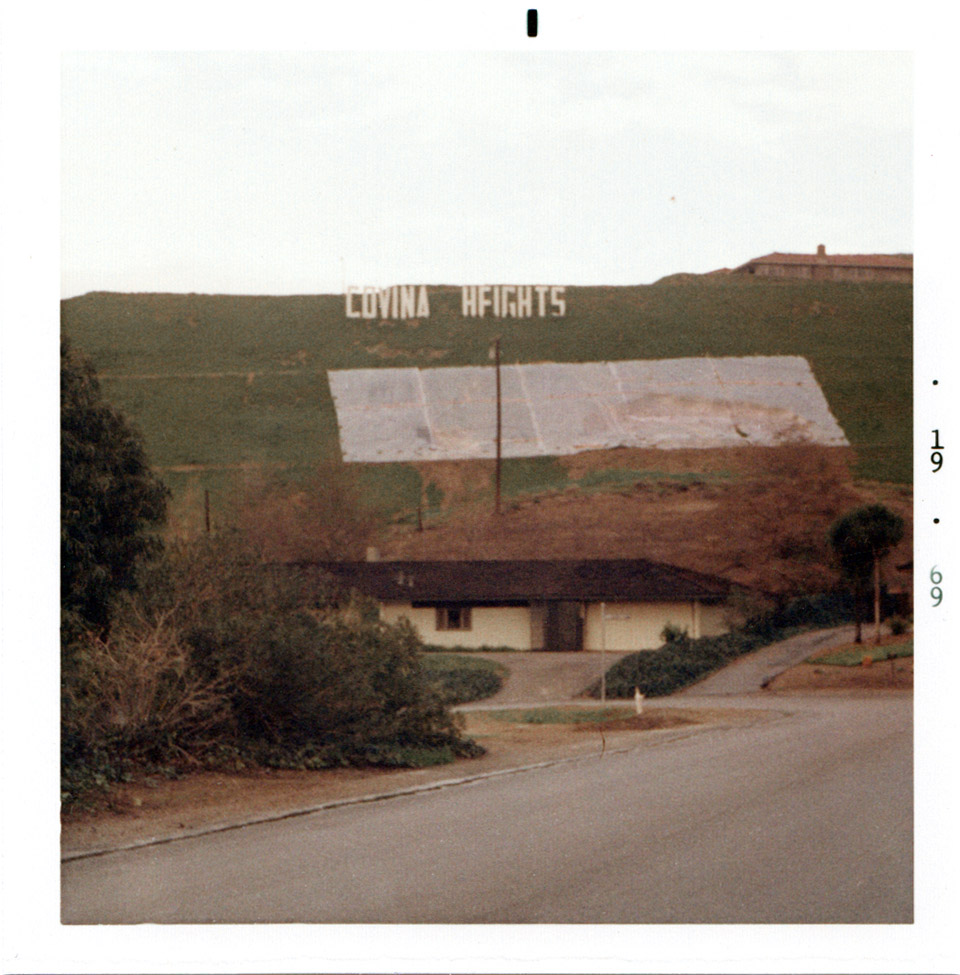
View of the former quarry site from Rancho El Encino, December, 1968.

The mine may be gone, but 50 years after the hills were bulldozed, many surface deposits of the white diatomaceous earth are still plainly visible.
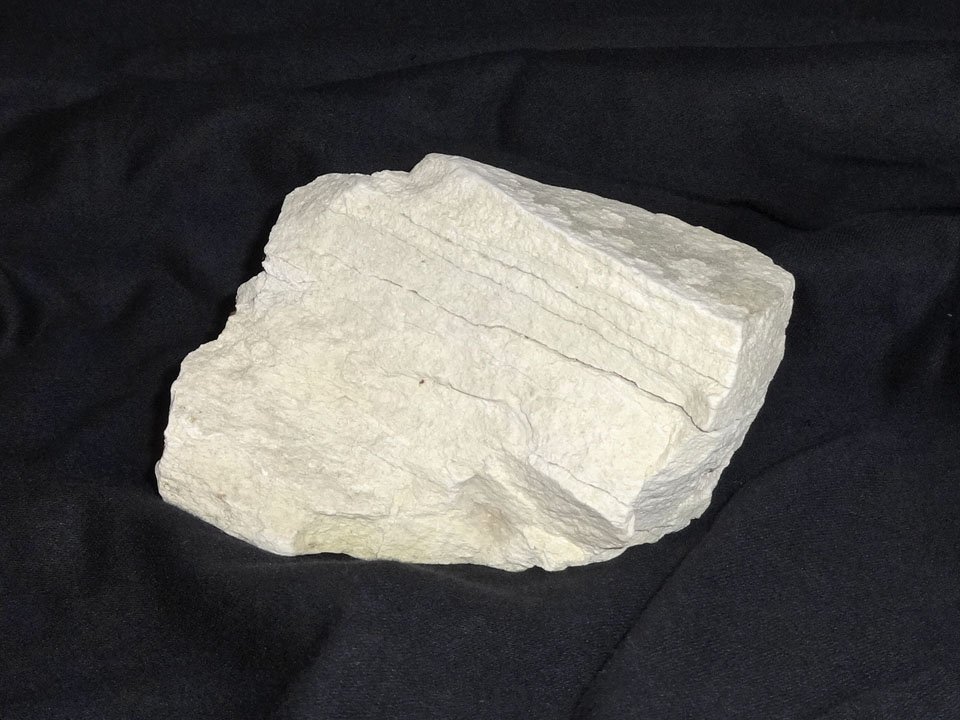
Treasure! My own specimen of Featherstone diatomite, collected in 2010 in situ from a still-intact geologic stratum.

References:
1 David Forbes Meiklejohn, Find a Grave memorial.
2 Covina Argus, January 23, 1937, p.1.
3 Covina Argus, December 16, 1921, p.13.
4 Harshman, E. N. 1933. Geology of the San Jose Hills, Los Angeles County, California. M.S. Thesis. California Institute of Technology, Pasadena, California. 91pp.
No comments:
Post a Comment
To post a comment, you must login to this page with the Google Chrome web browser. That is the only way that works now.